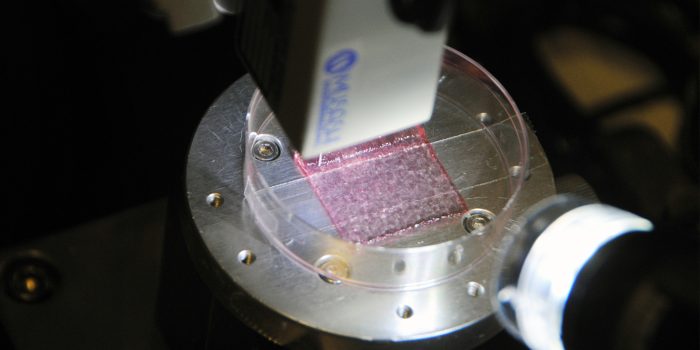Y’know, scientists over at the Wake Forest Institute for Regenerative Medicine pulled off quite a feat. In healing wounds, they used skin that was bioprinted to mimic our natural-lookin’, touch-feelin’ human skin—a definite game-changer. The wondrous breakthrough in this top-edge technology is fizzling with potential; has an immense capacity to flip severe wound treatment on its head— not just scrapes n’ bruises but dreadful burns and other unsightly injuries too!
Now comes the computationally-designed skin. It’s built from six cell types that mimic nature, mirroring our own skin’s tri-layer structure: epidermis, dermis and hypodermis included. See, they didn’t just create this thing and call it a day– no! They wanted to prove it worked; safety first, as they say. So researchers took their bioprinted piggy skin grafts for a test drive on full-on wounds in real live pigs. ‘N what’d we get? The results were pretty shiny—speedy wound closure ‘n flourishing skin regeneration!

Line up a good look at the incredible scope of bioprinted skin’s potential uses, especially when it comes to the remedial process for full-thickness wounds that crop up from frightful injuries or burns. State-side in America, approximately 500 thousand souls see firsthand treatment options each year as they grapple with such trauma—an ordeal standing tall at an impressive financial height of two big ol’ billion dollars.
In the past, physicians have generally turned to autologous skin grafting for dealing with full-thickness wounds. This means relocating healthy skin from another part of an individual’s physique to where it’s needed. It has its limitations though – chiefly in the scarcity of suitable donor sites, particularly when you’re looking at burn victims who’ve suffered extensive loss of their own hide. Bioprinted skin could be a new way forward since scientists can whip up as much as required using cells harvested right from the patient in question.

Let’s delve into the nitty-gritty. The procedure involves singling out six kinds of cells from the individual under treatment – melanocytes, dermal fibroblasts, follicle dermal papilla cells, epidermal keratinocytes, and then we’ve got those rare ones; DMECs (Dermal Microvascular Endothelial Cells) and adipocytes. After they’re separated out, these cell types are mixed resplendently with fibrinogen-based hydrogel bioinks—sounds hifalutin right? And ultimately printed using a sophisticated organ printer to fabricate something quite fascinating—a darn near replica skin construct.
In tests on pigs, full-thickness skin lesions were successfully treated in just 28 days using bioprinted skin generated from pig cells. This research points to the enormous potential of bioprinted skin as human wound-healing grafts, highlighting the bright future of regenerative medicine and wound care. The research, which was published in the journal Science Translational Medicine, represents a huge step forward for bioprinting technology and its potential to revolutionize healthcare.


